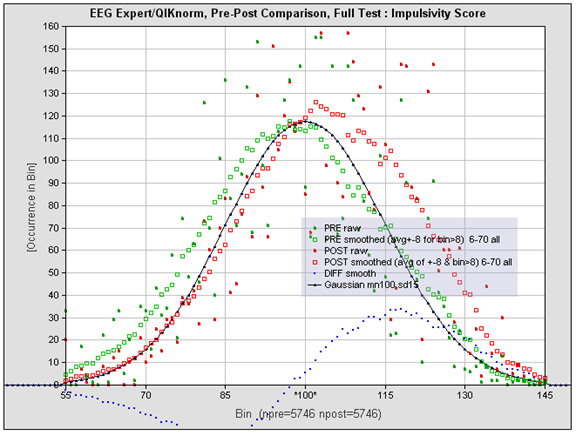Un debate frecuente en el terreno de Neurofeedback es la cuestión básica de si estamos buscando mejorar la funcionalidad o eliminar la disfunción. Esta distinción fue remarcada cuando uno de los primeros investigadores, Barry Sterman, dijo que si no podía identificar un déficit en el EEG, se vería obligado a enviar al cliente a casa. No se podría hacer nada por él ...
Ya sabemos que la función cerebral siempre se puede mejorar. Adicionalmente, somos capaces de entrenar funciones que no tienen una capacidad limitada: memoria, inteligencia, control motor fino. El déficit no debe de ser cualificado. Esto también simplifica el enfoque. Al igual que las familias infelices de Leo Tolstoy, cada una es infeliz a su manera; la disfunción cerebral es particular en cada individuo, reflejando tanto la genética como el ambiente. La función, por otro lado, está organizada casi de la misma manera en todos nosotros. Es como las familias felices de Leo Tolstoy. Los protocolos de capacitación bastante estándar nos ayudan a mejorar la capacidad funcional.
También obtenemos beneficios en términos de investigación. No hay un modelo placebo para una ejecución extraordinaria por encima de la norma. No se puede discutir sobre la regresión de la media. Cada individuo tiene su propio control del entrenamiento Nosotros tomanos como referencia el baseline del pre- training en cada caso.
http://www.eeginfo.com/research/infra-low-frequency-neurofeedback-for-optimum-performance.jsp
Siegfried Othmer, PhD
drothmer.com
----------------------------------------------
Comments from eeginfo.com
March 14, 2016 at 6:33 pm
An absolute joy to read this article. It has addressed some of the criticisms of non linear understanding of function. There is a most disturbing read of this graph, in that, the normative distribution is very closely related to pre training dysfunction presentations. Is this then a valid argument to say that normal is sick? Is the normal population so stressed that they are dysfunctional?
ReplyMarch 14, 2016 at 8:58 pm
Your concerns are valid. Our reference population is representative of those who walk the earth in many countries. There is indeed a broad distribution of function, and if any of those folks walked into a mental health practice and tested below some established threshold, they would likely be labelled dysfunctional via one or another of the accepted labels. With respect to attentional variables such as impulsivity, the dysfunctional are simply the tail of the “normal” distribution. There is no discrete category; there is no obvious criterion that discriminates the dysfunctional from the functional. The implied concreteness of diagnoses such as ADHD is therefore a convenient fiction. Matters are improved by ascertaining that the person at issue is in the tail of the distribution along several dimensions of behavior, not just one.
We are using population-based norms, but these reflect what is, not what ought to be. So the distribution is not normative in the traditional sense.


Escribe el primer comentario